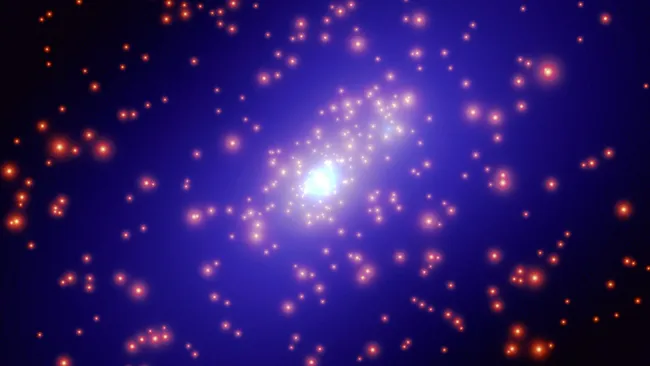New Research Indicates the Possibility of a Second Big Bang Event
Within a month of the Big Bang, a second cosmic explosion may have given the universe its invisible dark matter, new research suggests.
Cosmologists have put forward a new study suggesting that the Big Bang might have been accompanied by a “Dark” Big Bang, which released mysterious dark matter into our cosmos. By examining the ripples in the fabric of space-time, we may be able to find evidence of this event.
Following the Big Bang, most cosmologists believe that the universe experienced a period of rapid expansion called inflation. The cause of inflation is still unknown, but it is necessary to explain various observations, such as the universe’s flatness on a large scale. Inflation is thought to have been driven by an exotic quantum field that permeates all of spacetime.
At the end of inflation, this field decayed, resulting in a burst of particles and radiation that triggered the “Hot Big Bang” associated with the universe’s origin. Over time, these particles came together to form the first atoms, which eventually led to the formation of stars and galaxies hundreds of millions of years later.
However, there is an additional component in the cosmological equation: dark matter. Cosmologists remain uncertain about the nature of dark matter, but they observe its presence through its gravitational impact on regular matter.
According to the simplest models, during the conclusion of inflation and the subsequent Hot Big Bang, the universe was also inundated with dark matter, which followed a separate evolutionary path. Nevertheless, this assumption is made purely for the sake of simplicity, as proposed by two cosmologists in a paper published on the preprint database arXiv in February. Scientists have not detected any evidence of dark matter until much later in the universe’s development, after this elusive substance had ample time to exert its gravitational influence.
Therefore, there is no necessity for dark matter to have permeated the universe during the Hot Big Bang alongside regular matter. Additionally, due to its lack of interaction with regular matter, the researchers argue that dark matter may have experienced its own distinct “Dark” Big Bang.

The Dark Big Bang
The researchers delved into the concept of a Dark Big Bang in their study. Initially, they proposed the existence of a novel quantum field, referred to as a “dark field,” which is crucial for the independent formation of dark matter.
According to this new scenario, the Dark Big Bang commences only after the inflationary period subsides, and the universe expands and cools to a point where the dark field undergoes its own phase transition, transforming into dark matter particles.
The researchers discovered that the Dark Big Bang must adhere to specific constraints. If it occurs too early, there would be an excess of dark matter in the present day, whereas if it happens too late, there would be an insufficient amount. However, if the Dark Big Bang occurred when the universe was less than a month old, it would align with all existing observations.
Introducing the concept of a Dark Big Bang offers several advantages. Firstly, it aligns with scientists’ understanding of dark matter, as there would be no need for it to have a common origin with normal matter if they do not interact. Secondly, it grants researchers the freedom to develop models of dark matter without concerns about their impact on the behavior of normal matter during the early stages of the universe, providing greater flexibility in model creation.
Most notably, the researchers discovered that a Dark Big Bang would generate a distinct signature in gravitational waves, which are ripples in the fabric of space-time that persist in the present-day universe. This implies that the theory could potentially be tested in the future.
The researchers acknowledge that current gravitational wave experiments lack the sensitivity required to detect signatures of the Dark Big Bang. However, another method involving the use of gravitational waves and the distances to distant pulsars, such as the NANOGrav experiment’s Pulsar Timing Arrays, may hold the potential to achieve this feat.
This article is republished from livescience under a Creative Commons license. Read the original article.



0 Comments